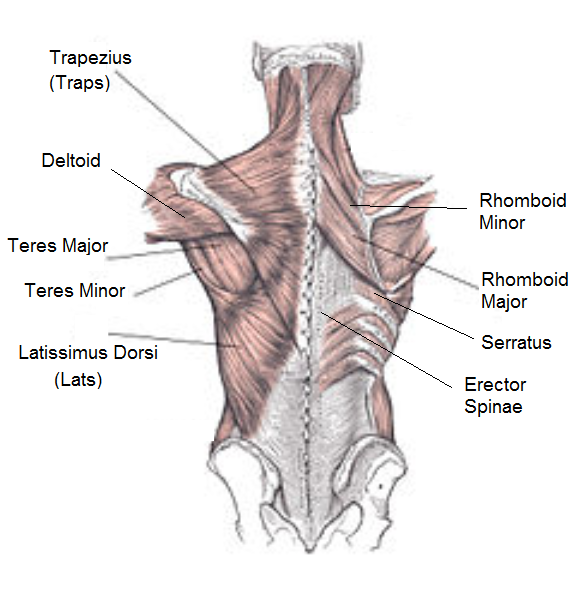Everything You Need to Know About Back Muscles

Introduction
A well-developed back is crucial for overall strength, posture, and injury prevention. Understanding the anatomy of your back muscles and incorporating the right exercises into your routine can help you build a strong and defined physique. In this guide, we’ll cover everything you need to know about back muscles, effective workouts, and answers to frequently asked questions.
Back Muscle Anatomy
Your back consists of several key muscles that play a significant role in movement and stability:
Trapezius
The trapezius is a large triangular muscle located between the shoulders and upper back. It can be divided into three parts:
- Upper trapezius: Engaged in shrugging movements.
- Middle trapezius: Activated during rowing exercises.
- Lower trapezius: Assists in scapular depression.
Many people work the trapezius muscles on either back or shoulder days, depending on their training preference.
Rear Deltoids
Although the rear deltoids are part of the shoulders, they are heavily engaged in exercises like face pulls, making them an essential component of back training.
Rhomboids
Located beneath the trapezius, the rhomboids help retract and squeeze the shoulder blades together. They are activated during rowing exercises.
Latissimus Dorsi (Lats)
The lats are the large, wing-shaped muscles responsible for creating the “V-tapered” look. They assist in shoulder extension and adduction, making them essential for movements like pull-ups and pulldowns.
Teres Major and Minor
These small muscles lie beneath the lats and contribute to upper body movement, though they do not require direct training.
Erector Spinae
These muscles run along the spine and play a crucial role in posture and spinal extension. They are engaged during compound exercises like deadlifts and hyperextensions.
How to Structure an Effective Back Workout
A well-rounded back workout should include:
- Pull-up/Chin-up variations (wide grip, close grip, reverse grip)
- Pulldown variations (wide grip, close grip, reverse grip, V-handle, rope)
- Row variations (seated cable row, bent-over barbell row, dumbbell row, T-bar row, single-arm dumbbell/cable row)
- Back extension variations (hyperextensions, deadlifts, good mornings, superman holds)
Frequently Asked Questions (FAQs)
How can I build a wider back and achieve the “V-taper” look?
Lat pulldowns and pull-ups are excellent for targeting the latissimus dorsi. Using different grip positions (wide, neutral, and close) ensures optimal muscle activation.
What is the role of biceps in back workouts?
Biceps assist in pulling movements, such as lat pulldowns and rows. To minimize bicep involvement and emphasize the back muscles, focus on using your hands as “hooks” and initiate movements with your back.
How can I improve back thickness?
Rowing movements (e.g., barbell rows, dumbbell rows, T-bar rows) are essential for increasing back thickness. Keeping the elbows close to the body ensures better lat activation, while flaring the elbows targets the rear delts and upper back muscles.
How often should I train my back muscles?
You can train your back twice a week, ensuring at least 24-36 hours of recovery between sessions.
What rep and set range should I use for back training?
- Hypertrophy (muscle growth): 8-12 reps per set
- Strength: 3-6 reps per set
- Endurance: 12-15 reps per set Focus on progressive overload while maintaining proper form.
SEO Optimization for Google & AdSense
Primary Keywords:
- Back muscle anatomy
- Best back exercises
- Back muscle growth
- Latissimus dorsi workout
- How to do barbell row
- Back workout routine
- Upper back training
- Bodybuilding back exercises
Meta Description:
“Discover everything about back muscles, anatomy, and the best workouts for building a strong, defined back. Learn how to achieve a V-taper, improve back thickness, and optimize your training for maximum results.”
Internal & External Links Suggestions:
- Internal: Link to related articles on “Chest Workouts” or “Shoulder Training”
- External: Link to research articles or fitness authority websites for credibility
Conclusion
A strong back is essential for overall fitness, posture, and strength. By understanding back muscle anatomy, incorporating the right exercises, and focusing on progressive overload, you can achieve a powerful and well-defined back. Stay consistent, train smart, and track your progress!